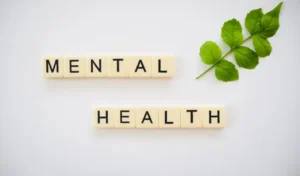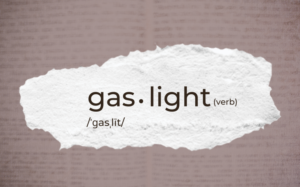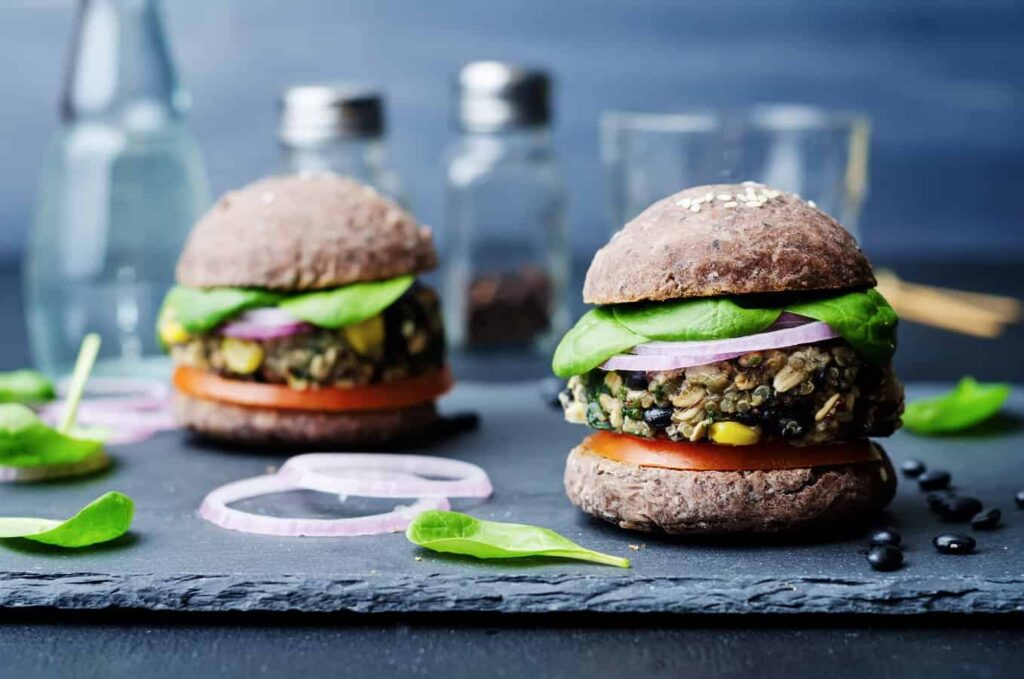
Cutting out animal products raises a common and important question: Can a vegan diet really provide enough protein? The short answer is yes, you can meet your protein requirements on a vegan diet. And no, it’s not as complicated as it might seem.
In this article, I’ll break down how much protein your body actually needs and the best plant-based foods to help you meet those goals. I’ll also cover how tracking your intake using FitZone can support your efforts.
With a little planning and the right tools you can confidently meet your protein needs on a vegan diet. Let’s take a look at how to make it happen.
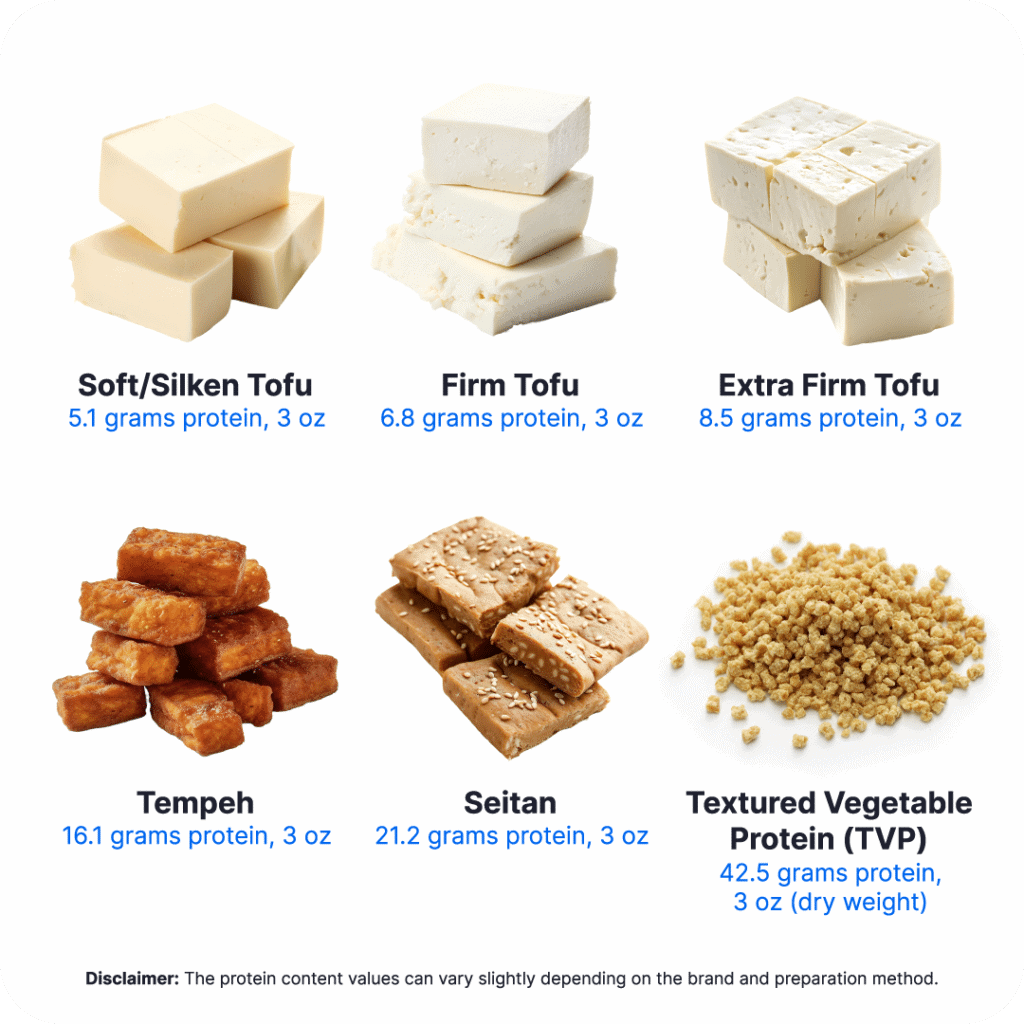
The Best Vegan Protein Sources
One of the biggest misconceptions I hear is that you need to eat animal protein to meet your protein needs. But meeting your protein needs on a vegan diet is definitely possible. In fact, plant-based proteins often provide additional nutrients like fiber, iron, and antioxidants.
Whole food sources of plant-based protein include pulses (the umbrella term for lentils, beans, and peas), tofu, tempeh, and edamame. Whole grains, nuts, seeds, and their butters can also boost your protein intake when used strategically in meals and snacks.
For convenience, there are plenty of options. Canned beans, frozen edamame, pre-seasoned tofu, and vacuum-packed lentils can save time in the kitchen.
While I recommend prioritizing whole foods, there’s a role for protein powders and meat alternatives on a vegan diet. These types of foods can help fill in protein gaps and make it more convenient to hit your protein goals.
Here’s a chart of various vegan protein sources and the protein amount they provide.
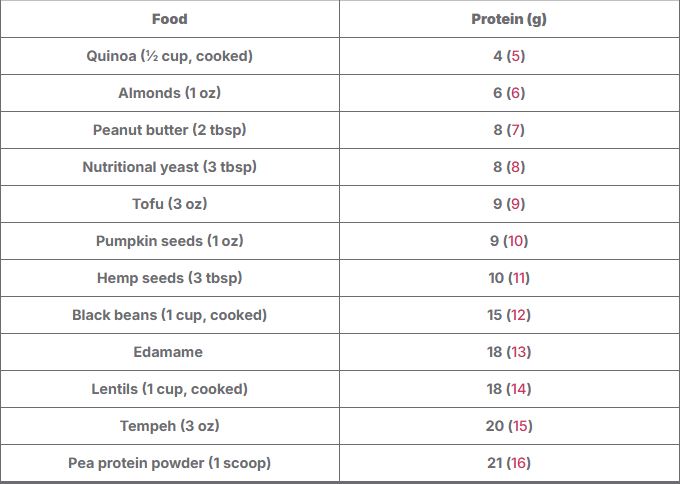
Protein Challenges on a Vegan Diet (and How to Solve Them)
Meeting protein requirements on a vegan diet is doable, but it requires some planning, and it’s not uncommon to run into a few roadblocks. Here are some common challenges and how to stay on track.
1. Challenge: Relying too heavily on processed foods
- Many plant-based eaters turn to convenience foods like faux meats, which can help meet protein needs but don’t offer the same nutritional value as whole plant foods.
Solution: Batch-prep plant-protein staples
- Foods like tofu, dried beans or lentils may make it easier to build quick meals.
- Keep some healthy convenience items on hand like plant-based protein powder and veggie burgers but don’t use them as a crutch.
2. Challenge: Not eating a wide enough variety of plant proteins
- To meet protein needs on a vegan diet, you may need to include a range of plant-based sources throughout the day (1).
Solution: Include different protein sources
- Rotate foods like lentils, edamame, tofu, tempeh, and beans to cover your bases.
- Include grains and nuts to fill in protein gaps.
3. Challenge: Not eating plant protein at every meal
- Skipping plant protein at meals may lead to inadequate protein intake (1).
Solution: Ready-to-eat staples
- Be prepared for last-minute time crunches with ready-to-eat staples like canned beans, quick-cooking tofu, and whole grains.
- Stock low-fuss veggies, like a vegan salad kit, so you can build a meal in minutes.
4. Challenge: Relying too heavily on carbs
- Pasta, rice, and bread are easy staples, but they shouldn’t dominate your plate.
Solution: Focus on portion size and balance
- Right-size starchy carbs and balance your plate with plant protein and non-starchy veggies (aim for half a plate’s worth of vegetables).

